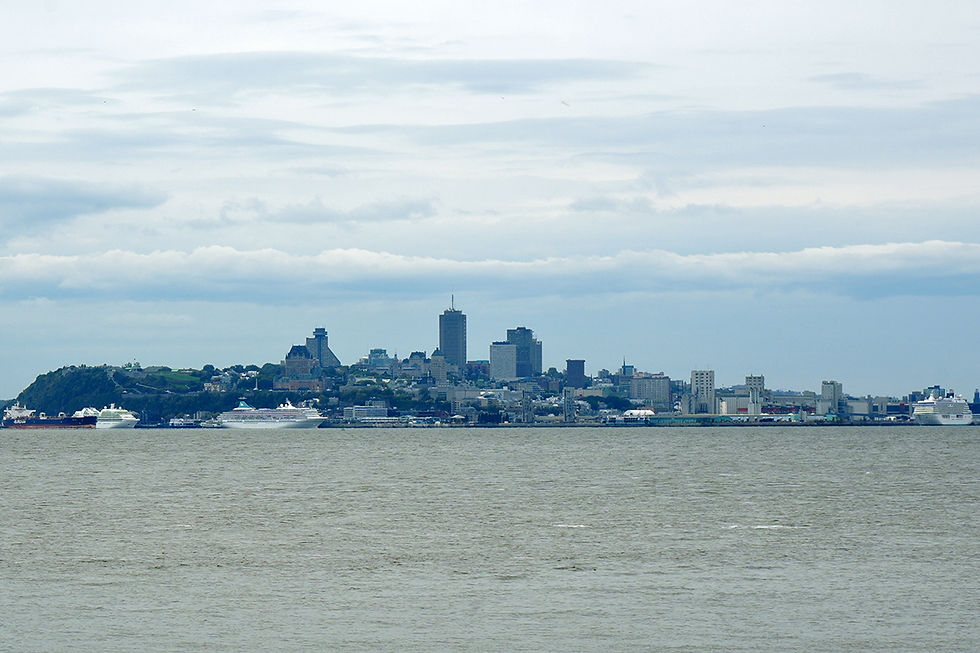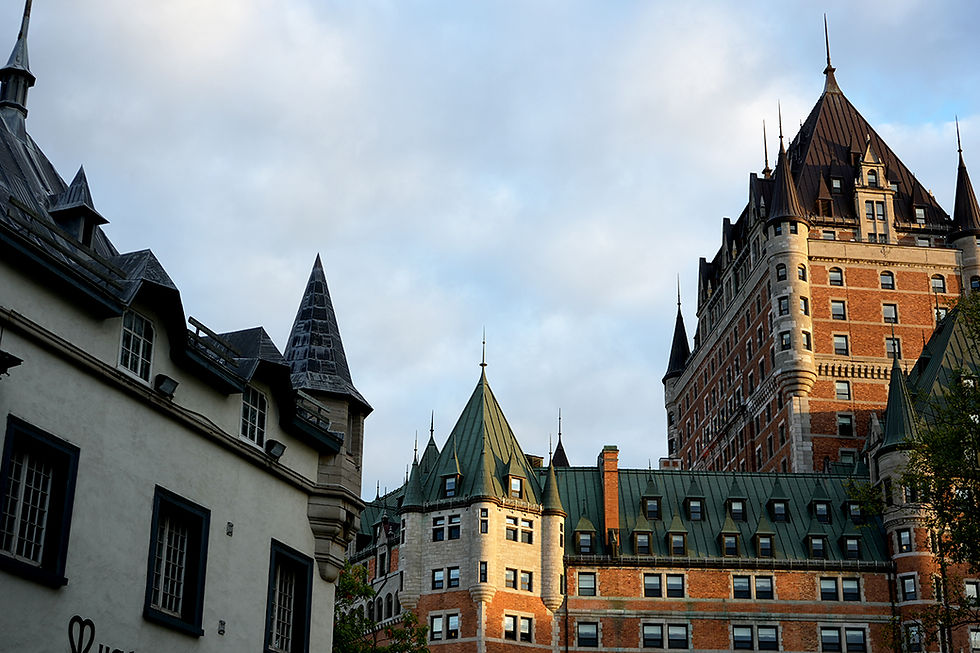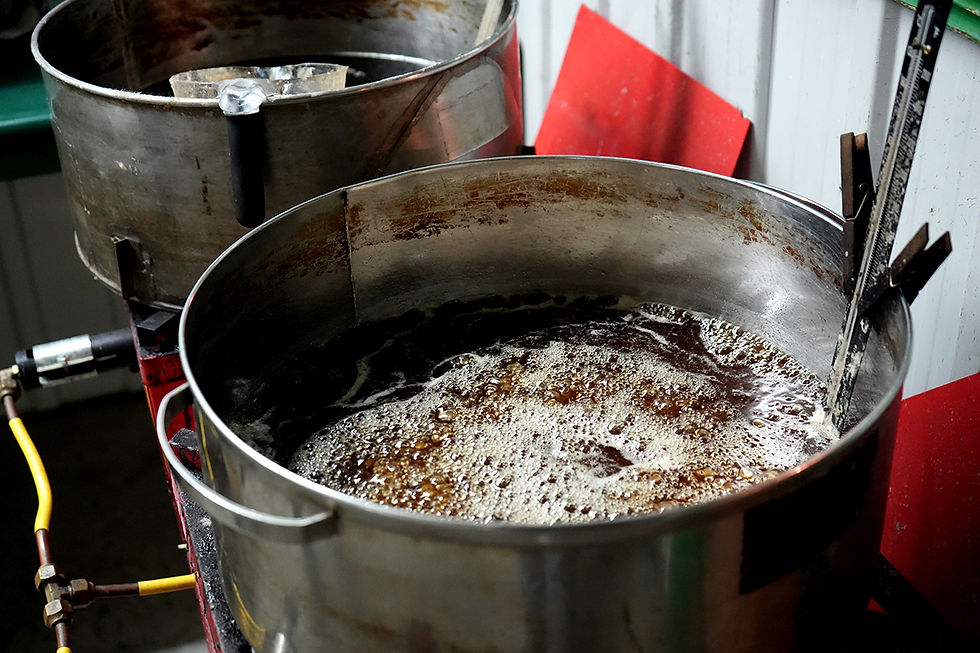Whales, woods, wonders: discovering Québec
- lavieenroute
- Nov 11, 2024
- 5 min read
Updated: Aug 1
Francophonie, touching nature and lots of history: Québec and its eponymous capital have a lot to tell. But Québec is by no means living in the past and captivates with its energy - and lots of charm.
Stone houses. Crêperies. Constant wind. And yet we are not in Normandy. Nor are we in Brittany. Because the ubiquitous maple trees, the syrup they give off and the skyline framing the old houses are treacherously Canadian.
Of course, the European vibes are more present than in very few other places in North America. This is also due to the fact that the French language is even more dominant here in Québec, the capital of Québec, than in Montréal, for example.
Europe in America: skyline of Québec

Québec is a large North American city with a European old town, a provincial capital that has international appeal. Even those who have not studied the history of this region in depth may have heard of the separatist movement in Québec, which aims to make Québec an independent state and no longer part of Canada. Two referendums have failed, but the movement and the self-image associated with it still exist. And at least the francophone part of the world's population continues to watch with interest. As does Scotland, a little, presumably.
Québec presents itself to travelers as very pretty, cozy and friendly. One of the continent's most beautiful pedestrian zones can be found in the old town - a UNESCO World Heritage Site, by the way - and the Château Frontenac, a huge hotel modeled on a castle, towers proudly high above the St. Lawrence River. The old town is lovingly maintained, decorated with flowers and welcomes visitors in a very friendly manner - and above all in French.
Château Frontenac, a Landmark of Québec City

The restaurants, bars, parks and stores are bustling. There is no doubt that Québec is a popular tourist destination and also a destination for cruise ships. Including the associated hustle and bustle, which non-cruisers also experience in the midst of tightly organized day and half-day tour groups.
At La vie en route, we prefer to travel on our own, so we got ourselves a vehicle that allows us to leave the city for a short time. Just within sight of the city is the Ile d'Orléans, a small island in the middle of the river. The clocks go a little slower there. After a brief stop at the island chocolaterie, we take in the Québec skyline and then slowly roll across the island. Literally, because tractors and cows clearly have the right of way here and the former are just as wide as the island roads.
We spontaneously stop in the middle of the forest, as a “sucrerie” offers to explain to visitors how Canadian gold is made - we're talking about maple syrup. We unpack all our French and are even able to follow most of the friendly maple producer's explanations. Freshly boiled down, we take a bottle home with us - sugary, vegan, a great natural product.
It couldn't be fresher: maple syrup in production

We leave Québec City heading north and immerse ourselves in the vastness of this country along the river. The moose warning signs are frequent and encounters with bears seem very likely here. What brings us here, however, are not the animals that inhabit the forest. We are interested in the giants of the sea, for whom the St. Lawrence River is a kind of never-ending buffet. Minke whales, belugas, sperm whales, fin whales and many more can be observed in the region, especially from the small town of Tadoussac.
This is a foretaste of wild Canada. A 30-kilometer-wide river, endless forests and less and less settlement meet less and less English. Tadoussac is cozy. Small restaurants and cafés form the center, and if you follow the groups of tourists during the day, you quickly end up on a boat that takes you closer to the whales at high speed. You are definitely not alone on the water, but as soon as a whale makes a brief appearance, breathing loudly, you forget all about the other people and boats. An incredible moment. Anyone who experiences whale encounters will fall in love with them immediately - the aura and presence of these marine mammals is hard to describe.
And suddenly it's there, very close: whale encounter near Tadoussac

Québec alone (city and province) would actually take several weeks to explore. Apart from the big cities, the region's nature and vastness are very diverse. You can spend a lot of time in Québec's parks, on the coast and in the forests, and the enormous distances and decreasing infrastructure towards the north slow down the journey.
We didn't have that time this time, and after short stays in the city of Québec and in Montréal, we bid farewell to Canada, the “Great White North”, which is in fact incredibly colorful and has captivated us with its diversity, multilingualism and nature. A bientôt!
Good to know
The city of Québec is connected to the Canadian rail network and is easily accessible by Viarail. There is also an airport, but the only direct connections to Europe are to and from Paris with Air Transat and seasonally with Air France.
We tried out several accommodations in Québec and Tadoussac. The only one that really appealed to us is called “Le Manoir d'Auteuil” and is located on the edge of Québec's old town. It's a wonderful little hotel, but it comes at a price.
Québec cuisine is very varied, original and goes far beyond American gastronomy, which is also widespread in the Anglophone parts of Canada. Here is a selection of places we liked:
Le Continental in Québec - the headline here is “Old School”. This somewhat more formal restaurant could also be located in France. If you order steak or crêpes suzette, you can see how the dish is prepared at your own table - flambéing included. The website was not available at the time of publication.
The BEClub Bistro in a side street of the pedestrian zone. The cuisine is creative and made from regional ingredients, including wine from Québec (spoiler alert: the wine has a healthy acidity and is worth the experience). Very friendly and cozy.
The Microbrasserie in Tadoussac. The attached pub is lively, friendly and, apart from pub food, offers the opportunity to sample the local beer.
Also in Tadoussac, there is a small café in the middle of the village called l'Abri Côtier. From the terrace, you can watch the hustle and bustle of the village, but also look out over the river.
If you want to go whale watching in Tadoussac, it's hard to avoid AML Croisières. AML offers excursions on larger boats. If you want to be closer to the animals and travel with fewer people, it is best to take a tour on a motorized inflatable boat - even if this description sounds somewhat modest for the speedboats with around 20-30 seats. The guides on board are highly trained and make up for the “mass experience” on land.



Comments